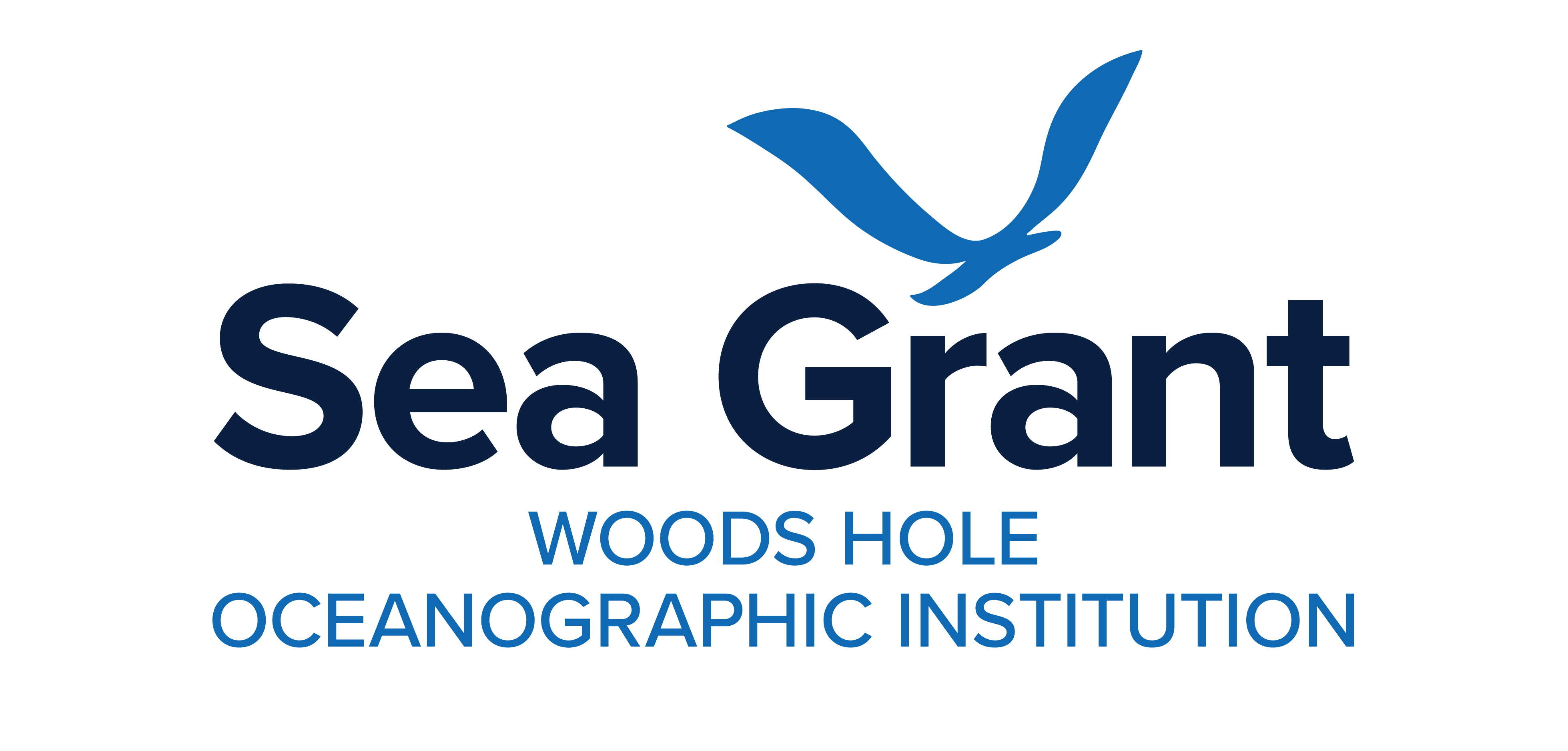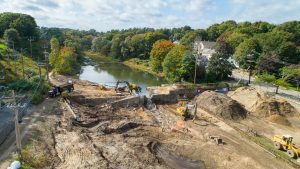Search results for: https%3A/seagrant.whoi.edu/wp-content/uploads/2018/05/LlopizetalLO2010.pdf/feed/shannon.jarbeau@barnstablecounty.org
Food Webs
Food Webs Background Food webs are dynamic and complex. Species in each trophic or feeding level rely on their prey base and in turn are critically important to the organisms that feed on them. Energy travels through the food web and steadily decreases with each trophic level it passes through as some is used for…
Read MoreClearing the Way for River Herring in Plymouth
Just a stone’s throw from the Plymouth Rock where the Pilgrim’s first landed in 1620 is the mouth of Town Brook, a river that runs through the center of Plymouth and was once the source of fresh water and food for the Pilgrims. Chief among the fish from the river were herring, whose annual migration…
Read MoreEducation
K-12 Education The goal of the Woods Hole Sea Grant Education Program is to increase ocean literacy – “an understanding of the ocean’s influence on you-and your influence on the ocean” so that all citizens young and old can make informed and sustainable decisions involving our coastal resources, communities, and economies. Workshops for Educators Lesson…
Read MoreMarine Mammals In Our Backyard
Marine Mammals In Our Backyard Background All mammals: breathe air, give birth to live young, nurse their young, are warm-blooded, and have hair (baby whales and dolphins actually have small hairs on their rostrums (nose) when born and it eventually sheds away leaving behind small follicles). Marine mammals have a range or territory where you…
Read MoreBioacoustics
Bioacoustics This program is a collaboration between the NOAA Northeast Fisheries Science Center and Woods Hole Sea Grant. Background Light is very limited in the ocean habitat. Below the photic zone (the depth to which sunlight is able to penetrate) it is very dark. For marine mammals, however, this vast 3-dimensional world is far from dark. The…
Read MorePlants and Animal Habitats
Plant and Animal Habitats This program is a collaboration between the Cape Cod Regional STEM Network and Woods Hole Sea Grant. Summary In this 2nd grade unit, the students will explore the habitats of plants and animals. A habitat is a place where an animal or plant lives that meets…
Read MoreCOVID-19 Resources
COVID 19 RESOURCES We are pleased to offer the following resources to assist our stakeholders, developed during the pandemic but still relevant to a great deal as we transition back to a “new normal.” Woods Hole Sea Grant staff are working a hybrid of remote and in-office schedules but as always are available to assist you…
Read MoreMarine Debris
Marine Debris Marine debris is a global problem that injures and kills marine animals, threatens to navigational safety, and poses a human health threat. WHOI Sea Grant is dedicated to the reduction of marine debris, regionally and globally. We are actively involved in the mitigation of marine debris in our environment by funding research into…
Read MoreCoastal Impacts Newsletter – Dec. 2020
Coastal Impacts Woods Hole Sea Grant Newsletter DECEMBER 2020 CONTENTS Letter from the Director WHSG Continues DEI Efforts with Recording of Virtual Seminar on Systematic Racism in America Women in STEM Panel Discussion, Part of Girls In Science Program, Available For Viewing Online New Extension Bulletin Available On Use of Discarded Christmas Trees New…
Read MoreTechnology Enables Better HAB Monitoring and Mapping
Technology Enables Better HAB Monitoring and Mapping The project’s sampling plan for the Nauset area of Cape Cod. Sept. 2018 — Nauset Marsh in Eastham, Mass. on Cape Cod serves as a “natural laboratory” for researchers working to better understand harmful algal blooms (HABs) or red tide. HABs in Nauset are caused by the phytoplankton…
Read More
